|
PART
4 |
|
|
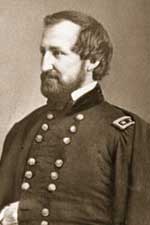 |
|
Major General
William Starke Rosecrans |
| |
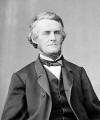 |
When hostilities began to escalate, as his father
had done when he was a lad, William began drilling the local men of
the 14th Ward Company of Cincinnati called the "Marion Rifles".
On April 14th Fort Sumter was attacked.
On April 19, Rosecrans "impelled by a strong
sense of duty" turned the operation of the factory over to his
partners and stood in his worn lieutenant’s uniform in Columbus to
offer his services to Governor William Dennison, Jr.
|
Governor Dennison
Wikipedia Photo |
|
|
|
|
|
|
|
|
|
Like Rosecrans, Elikam Scammon also volunteered his
services to Governor Dennison. |
|
Rather than recap each battle, I recommend William Lamers’
Edge of Glory. The book is available in Community Library and in
the Myers Inn Museum Gift Shop. Whitelaw Reid's Ohio in the
Civil War is also a good source. They have spent hundreds of
pages dissecting each battle so there is no need for me to do it
again. Instead, I will offer comments from others which will
help you decide what is the truth. |
|
A
Nutshell View of Rosecrans' Role in the Civil War
|
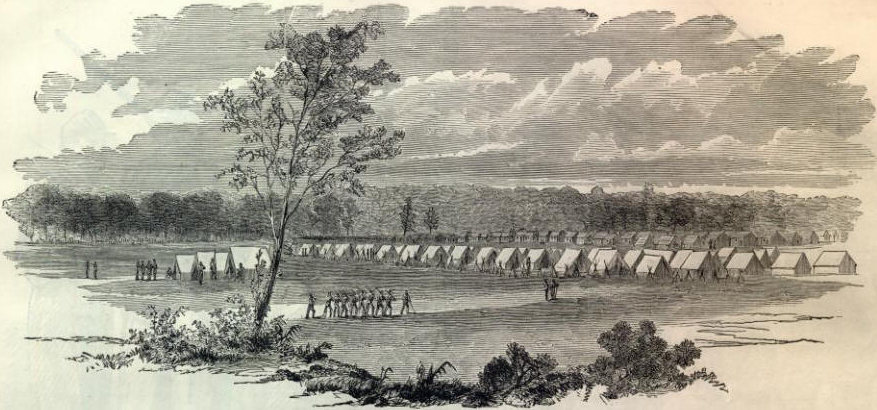 |
Camp Dennison laid out
by Rosecrans
drawing
from
Harpers WeeklyAugust 31, 1861 |
-
Five days after Fort Sumner, Rosecrans stood
before Governor Dennison in his old Lieutenant's uniform,
to volunteer where needed
-
As a civilian aid he was asked to help
General McClellan select a camp site for the Ohio militia. Rosecrans set up Camp Dennison.
-
Sent to Philadelphia to confer with
gun-manufacturers about procuring guns for the Ohio
troops.
-
He was sent to Washington to make
arrangements for clothing and pay for the troops. Asked to
be appointed brigadier general of volunteers
-
Office of Chief Engineer of the State of Ohio
was created for Rosecrans. He was later commissioned Colonel of the
23rd Ohio Regiment on May 15, 1861
-
Sent to Columbus to reorganize Camp Jackson
which he named Camp Chase
-
Appointed Brigadier-General in the regular army May 16,
1861
|
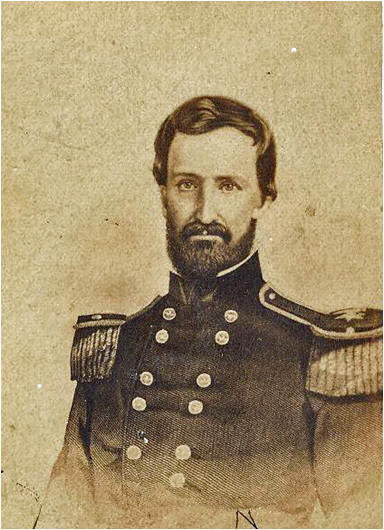 |
|
Colonel Rosecrans |
-
June 7, 1861, Governor Dennison appointed
Delaware County native, Rutherford B. Hayes Major in the 23rd
Ohio Volunteer Army under the leadership of Colonel William J.
Rosecrans, another Delaware County native.
|
|
Battle of Rich Mountain- July 11,
1861 |
|
Rosecrans won
battle of Rich Mountain
but McClellan who was not there took credit for
the win. Controversy and even false reports kept the
citizens wondering what was really happening. |
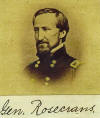 |
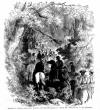 |
- The war broke the state of Virginia apart.
The big plantations in the south and east needed their slaves
and were all for secession.
- The people in western Virginia found themselves without a
government and law and order.
- Rosecrans addressed them on August
22, 1861 saying:
"Loyal Citizens of Western
Virginia.
|
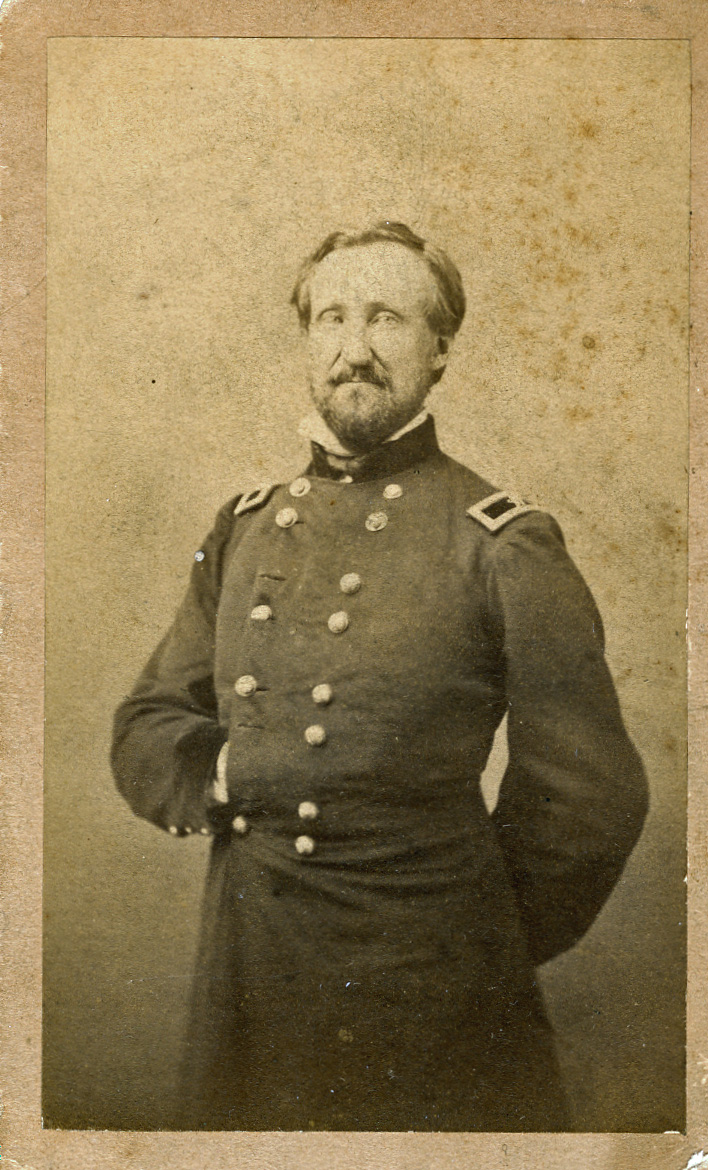 |
|
 |
|
See More
Frank Leslie Drawings of the
Civil War |
Brigadier-General
Rosecrans |
|
 |
|
You are the vast majority of the people.
The constitution and
laws of Virginia are only in force in Western
Virginia
These laws you must
maintain
Let each town elect 5
reliable energetic citizens as a committee of public
safety and be responsible for the preservation of
peace and good order"
|
|
Photo of Rich Mountain
from
Family
Things
by Mim
and the state of
West Virginia |
|
- The state of Kanawha was formed in August 1861.
- In 1863 the name was changed to West Virginia.
- The West Virginia State Legislature gave Rosecrans a unanimous
Vote of Thanks.
|
|
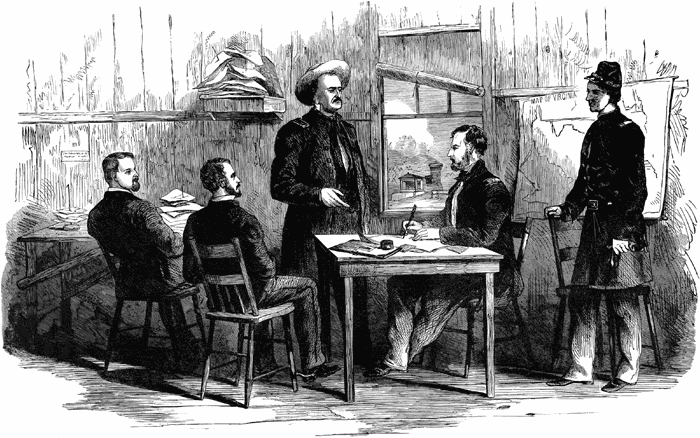 |
- The Battle of Carnifax Ferry
was also to be a victory for Rosecrans. By dusk on
September 10, 1861, Rosecrans' men had been marching since 3 a.m.,
climbing a slippery cliff, through blackberry thorns and laurel
thicket attempting to turn the enemy's right.
|
 |
|
Rosecrans'
Headquarters
drawn by Henri Lovie |
- Rosecrans said he had never seen more exhausted men so he
decided to withdraw and await daybreak. When the tired men
doubled back on its line, they mistakenly shot their own men.
Rosecrans ordered some of his men to pretend to be attacking,
while the remainder crept back to sleep. The enemy fell
for the ruse and
Confederate General Floyd retreated leading his men down the
cliff on a steep, single track road.
|
- A devout Roman Catholic, Rosecrans understood the importance
of religion to his soldiers. He did everything he could to
help the men worship in their own traditions.
|
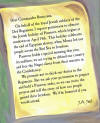 |
After the September 10, 1861, battle at Carnifax Ferry, Ohio's 23rd
regiment was camped at Sewell Mountain waiting to march to Fayette.
Private J. A. Joel,
a Jewish lad from Cleveland, Ohio, wrote to Rosecrans asking
permission to hold Seder to celebrate Passover. His account
was printed in the Jewish Messenger in 1866 and used as the
basis for a juvenile historical fiction book by Bryna J. Fireside. |
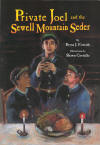 |
- On September 18, 1861, Rosecrans appointed
Rutherford B. Hayes
judge advocate for the Army of Western Virginia.
- On October 24th Hayes was relieved of duty as judge advocate
and appointed Lieutenant Colonel Hayes of the Twenty-third.
- On Sewell Mountain in November 1861 it was so cold 40 horses
froze to death. This was recalled in the
Charleston's Virginia Free Press in 1869.
- On November 11, 1861, General Rosecrans wrote to Governor
Dennison of Ohio to tell him the condition of the
troops in Western Virginia. Rosecrans explained the reports
were not entirely true and while they had been without the
necessary items, it was more to do with the movement of the
troops and not lack of supplies. He suggested supplies
continue to be collected and sent to the State Quartermaster so
they could be gotten as needed.
|
-
Following Rich Mountain,
Rosecrans went to Washington to give McClellan his plans for
Western Virginia but McClellan was ill with typhoid.
Finally General Fitz-John Porter interviewed him. Both
Porter and McClellan were former students of Rosecrans at West
Point.
-
Rosecrans was not given any orders so he
returned to Wheeling to discover McClellan had reduced his
troops from 22,000 to 2,000.
|
 |
Rosecrans'
Headquarters |
- Rosecrans got word his mother,
Jemima, who
made her home with her son Charles in Keokuk County, Iowa, had
died. As soon as the children recovered from whooping
cough in Yellow Springs, Anne would joined Rosecrans in Wheeling. G.
P. A. Healy painted their portraits.
|
- Wintering in Wheeling
was rough on Rosecrans' troops. McClellan had reduced from
22,000 to 2,000. Cold winter with heavy snowfall brought
misery to the remaining troops. A typhoid epidemic struck so
Rosecrans moved the men from crowded houses to clean hospital
tents which reduced the number of sick from 300 to 30.
|
 |
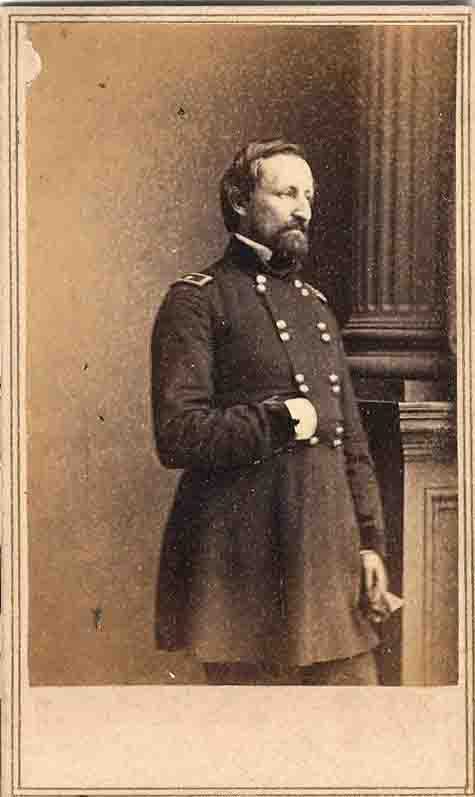 |
|
- Rosecrans concentrated on building a mule train to get them
over the mountains.
- He designed a light four wheeled
ambulance with
springs to carry the wounded troops. This was
immediately adopted throughout the Union Armies
- Brigadier-General Rosecrans'
letter of March 12, 1862, to General Lorenzo Thomas,
Adjutant-General concerned his plans for moving forward in
Virginia, controlling railroads, and providing materials for his
men
- Rosecrans' letter of the
18th
of April 1862, which he wrote to Secretary of War Edwin W.
Stanton, says his men are idle and ready to move.
|
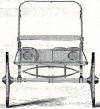 |
|
|
Rear View |
|
|
 |
|
Photo of Fire Scars
Brady Photo
|
|
Side View |
-
General Fremont replaced Rosecrans in Western
Virginia, and Rosecrans was transferred to the western theater,
-
Rosecrans letter from headquarters of the Army of the
Mississippi. He wrote,
"For more than a year we have engaged
in this struggle, into which an arrogant and dictatorial
slave-oligarchy has driven a free, happy, and peaceful people,
fighting for the rights of all. With true bravery and
invincible patience our citizen soldiers have stood on this
ground to the present moment, against violators of the laws of
war and humanity. Remaining true to their principles, they
have said, by words and actions, to their fellow citizens in the
South, We fight for common rights. If we win, you win.
If the government is maintained, you will dwell under protecting
shadow as freely as we. And there we stand, and thus we
say, to-day.
"But if the Confederates prevail, farewell peace and safety to
us; farewell freedom forever! Their principles and
leaders are known to us. They cheated us, crying out, No
coercion; holding out false hopes and deceitful assurances of
friendly regard, while, assassin-like, they were preparing to
destroy our Government and reduce us to anarchy and servitude.
The past year's experience renders it certain that if they
triumph, blood and desolation, fire and sword, or arbitrary
subjection to their will, awaits every white man who has manhood
enough to dislike their system of slavery.
"They will omit no means, honest or dishonest, to insure
success. Misrepresenting, calumniating our motives,
ridiculing our honest efforts to mitigate the horrors of war,
and inflaming the passions of the populace by low epithets, are
among the milder and more ordinary means resorted to by this
pseudo 'chivalry,' the meanest aristocracy that ever stood at
the head of a civilized society."
|
|
Iuka-Corinth,
Mississippi, Campaign |
-
Geologist Andrew Brown, portrayed Rosecrans as a master
cartographer. While at Corinth, Rosecrans staff under his close
supervision, developed an excellent set of maps of Northern
Mississippi. These were
printed on
site. Later U. S. Grant would use these maps.
-
Rosecrans leading the Army of Mississippi
defeated General Sterling Price in the battle of
Iuka, Mississippi on September 19, 1862.
Rosecrans' Army approached the city from the southwest. Army of
the Tennessee under Major-General U. S. Grant and General
Edward O. C. Ord approached from the northwest and were to
commence firing when they heard Rosecrans. After fighting
through the afternoon Rosecrans defeated General
Price without assistance of the other two. Why did Grant
stand by during the fight? If Grant modified the plan, why
did he not inform Rosecrans? Grant failed to give
Rosecrans any credit for the victory. Now there was more bad blood
between the men.
-
Rosecrans defeated General Van Dorn and
General Sterling Price in the second battle of Corinth on October 3rd and 4th,
1862. Union casualties were 2,520 (355 dead, 1.841
wounded and 324 missing) Confederates lost 8,691 (1,423
dead, 5,000 wounded and 2,268 captured or missing).
-
Here is where historians disagree as to what
happened next. Grant's Memoirs maintain Rosecrans "failed
to follow up the victory, although I had given specific orders
in advance of the battle for him to pursue the moment the enemy
was repulsed; he did not do so, and I repeated the order after
the battle."
-
Rosecrans maintained he was never given these orders. No
orders of this kind appear in the Official Records. The day after the battle, Rosecrans pursued the retreating
Confederate army but was recalled by Grant despite protests from
Rosecrans.
-
In Bickham's account in the Cincinnati Commercial,
dated October 9: And now, to whom
is due the honors of the battle of Corinth? The verdict of
the whole army is in favor of General Rosecrans. Officers
universally assert that it was he who planned the whole series
of operations by which the enemy were entrapped under the forts
of Corinth. He found the position unprepared for
attack, and without orders he made a powerful place. By
skilful manouevering he deceived the enemy. By pretending
to be beaten on Friday, he drew them into a place in which he
gave the terrible punishment, and almost destroyed their army.
It would seem from General Grant's dispatches that he claims the
honors.. . . He did not assist General Rosecrans. After
the enemy was defeated he sent General McPherson to Corinth with
two thousand men. . . . That is all he did.
By rights, Rosecrans should have been promoted following all
of his successes but he was passed over.
Rosecrans was made Major General on September 17, 1862.
Lincoln back-dated the commission to March 21, 1862.
-
On October 16, Department of Tennessee was
created with Grant in command.
-
Family news was not good. Anne and the
children were staying with Mrs. Eliakim Parker Scammon in Yellow
Springs, Ohio. During the battle, Rosecrans received word that
Annie had been dangerously ill but was recovering. Their
baby (Charlotte) was dead.
|
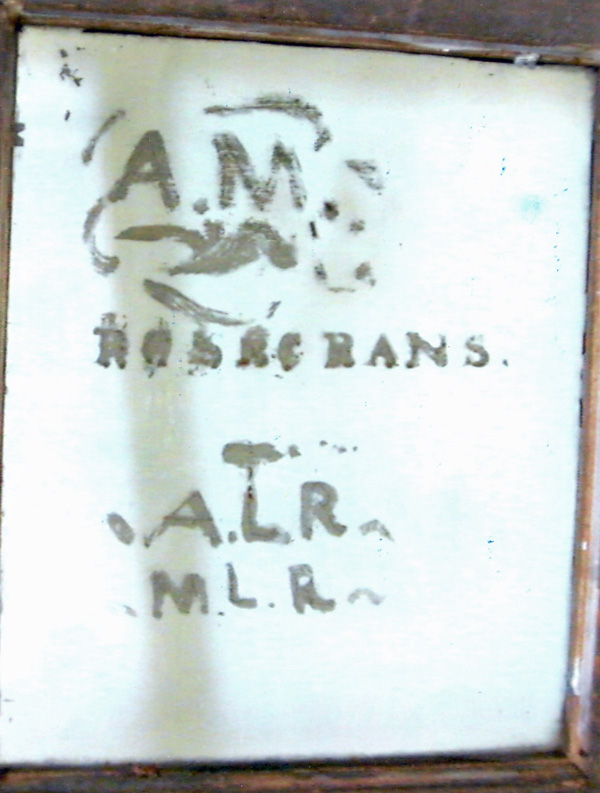 |
-
To cheer Annie, Rosecrans wrote a detailed
letter of the truce with Van Dorn at Holly Springs.
Lamers says he
bragged a little like many husbands when he wrote, "[The
Confederates] have a wholesome regard for me, praise very highly
the style of our troops and the tactics on the field of battle.
They are
more afraid of me than any other general in service.
Thanks be to God for that."
-
Click on the window at the left. It is
from the house in Yellow Springs. Below is a page from
2014 Historical Tour forwarded by Tom Wolke.
|
|
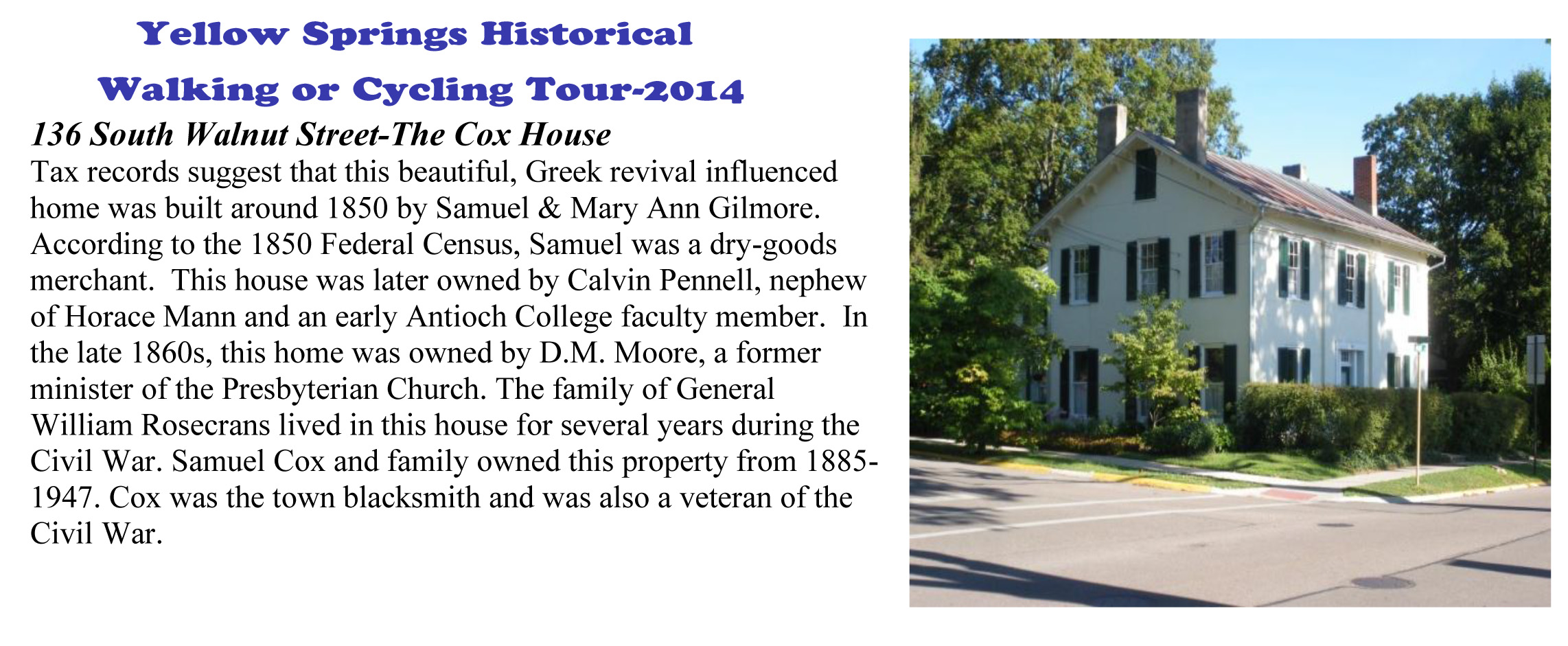 |
|
|
|
|
|
|
|
|
|
-
Grant and the politicians may not have liked
Rosecrans but the men under him were a different matter. Cyrus Boyd wrote,
"Genr'l Rosecrans, our commanding General came around this
evening and was almost taken from his horse by the soldiers.
The wildest enthusiasm prevailed and every man seems ready
to pursue the enemy. We have had but few battles so
well managed as old "Rosa' has managed this one."
-
Years later on
June 2, 1895, The San Francisco Call, had a front page
article by James
Gilmore entitled Rosecrans' Battle: He Held His Own
Against a Vastly Superior Force
-
At Rosecrans interment in Arlington National Cemetery,
David B. Henderson,
Speaker of the House of Representatives said:
" I had the pleasure of serving under his command at the
battle of Corinth, and also served with him in the House of
Representatives where our relations became intimate and most
friendly. He was one of the most fearless officers that I
ever saw in battle. He seemed to be unconscious of danger.
On the fourth of October, 1862, when the armies of Price and
Van Dorn were pressing our lines and symptoms of our falling
back were manifest, he suddenly dashed between the Federal
and Confederate lines like the very spirit of war. He
passed but a few steps in front of where I was. I can feel
his presence yet. His hat had blown off. His firmly set
face seemed as though he was made for a god of battle.
Swinging his sword he called out to us:
" Stand by your flag and country, my men!"
"
How he escaped, God only knows. It seemed as though the
very air was full of lead, and death was holding high
carnival along his pathway, and yet fearless he rode into
the very teeth of death, rallying successfully his men for
the mighty struggle before them. That splendid, fearless,
heroic dash was the death-knell to the armies of Price and
Van Dorn."
-
Corinth in the Civil War by Timothy B.
Smith on the Mississippi Historical Society site,
shows a print of the battle and a photo of the dead outside
Battery Robinette the morning following the battle.
|
|
|
|
|
|
|
|
|
|
|
Army of the
Cumberland |
-
In October Lincoln antedated Rosecrans commission to March
21, 1862 thus giving him recognition for his Western Virginia
victories. This cleared the way to make Rosecrans Commander of the Department of
Cumberland and he was sent to replace Buell. Grant was glad to
be rid of him. Major General Thomas was mortified that he was
passed over for the position. In typical Rosecrans fashion, he
wrote to Thomas, "My
command came to me unsought. Had the government so willed. I
would gladly have served under you" and gave Thomas his choice
of commands.
-
Rosecrans changed the name to
Army of the
Cumberland.
-
Rosecrans set up headquarters in a private
residence in Bowling Green.
Daniel notes, "The
ungrateful, Southern sympathizing hostess promptly tinctured his
drinking water with soft soap, confining him to bed for a day."
|
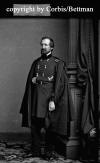 |
|
Major General Rosecrans |
-
Major General Rosecrans found his new
command in a very sorry state. He obtained permission to
muster out officers guilty of pillaging, drunkenness,
misbehavior and other offenses. Absenteeism among the troops
was rampart. He got permission to muster out these men.
|
-
When Rosecrans took over the Army of the
Cumberland supplies were very low and often non-existent.
He requested John W. Taylor who had served him as Quartermaster
of the Army of Mississippi be transferred to the Army of the
Cumberland to serve as Chief Quartermaster. Even when the
river was unnavigable and the railroads were not operating, he
made sure to anticipate the needs of the army.
-
Rosecrans also brought Samuel Simmons from
the Army of the Mississippi to serve as chief of the Commissary
Department which contracted and found food for the soldiers
making sure a full supply was on hand.
-
Rosecrans built up his
cavalry.
Requested General David Stanley be transferred to the Department
of the Cumberland to command the cavalry.
They are "the eyes and feet of my army, and will be its
providers."
|
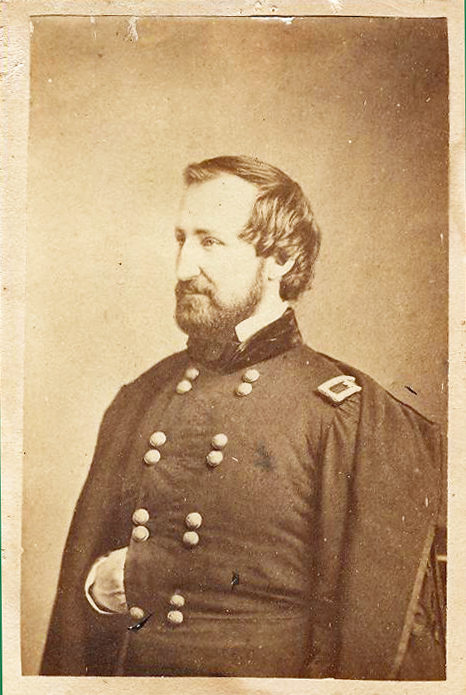 |
 |
- Under Rosecrans' personal care and inspection, the
Medical Department
conceived and planned this field hospital at Murfreesborough
while the Engineer Corps of the Pioneer Brigade laid it out like
a village: a city of tents, with broad streets humped in
the middle, alleys and walks. Gutters ran along the
streets taking the rain water which ran off the tents into
channels then to the gutters The headquarters medical
tents, surgery, house erected for a hospital, sanitary stores,
the post-office, and news-depot were in the center of this tent
city.
|
from
Annals of
the Cumberland
|
- Rosecrans built up the
Topographical Department. Mapping was a high priority of the
army. The cartographers were given every resource possible.
Using pre-war State Geological Survey Maps as their base, they
supplemented these with cavalry reconnaissance, civilian informers,
and other sources for areas still under Confederate control.
Then all the information was quickly incorporated in usable maps.
|
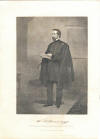 |
-
Engineering Corps and Pioneer Corps (the latter
was half mechanics and half laborers) were needed to build roads,
railroads, bridges and other structures needed to sustain the army.
-
He established bases and lines of
communications to
keep constant communication between the different parts of the army
and the different commanding generals. He adopted the signal
system and reorganized the Army Signal and Telegraph Service
-
Established an Army
Directory to locate each command and join the thousands of
stragglers left behind when the army moved. Colonel
Truesdail set up a tent and installed an agent to man it.
Handbills were posted to give the location of the tent where
stragglers were dispatched to their respective camps.
-
An Inspector General routinely inspected the troops.
Rosecrans personally reviewed the brigades demanding their best.
The men responded.
-
Developed a thoroughly complete system of
daily military mail
with the leadership of Colonel Truesdail. Letters were
addressed to Soldier, Company Regiment, Branch (Artillery, Cavalry,
or Infantry), Army of the Cumberland. Distributing officers
had lists so they could find where the letter should be sent.
This was very popular with the soldiers.
-
Religion was a large part of Rosecrans' camp
life. While there were 44 Protestant chaplains, there were only
3 Catholic priests although there was a large number of Irish
and German Catholics soldiers. First and second generation Irish, German and
Italian immigrants accounted for the high percentage of
Catholics under Rosecrans' command. The mostly Irish 10th Ohio
had its own Catholic chaplain, Father William T. O'Higgins.
Nineteenth century church records note that Rosecrans "edified
the army by attending the holy sacrifice of the masses." (To
"edify" — an archaic term-means to "instruct or improve morally
or spiritually by good example.")
"As commander of the U.S. Army of the
Cumberland, Rosecrans recruited his own personal "confessor."
Father Jeremiah Trecy not only looked after the general's
spiritual needs while camped in Rutherford County, he also rode
with the general under fire and tended to the wounded and dying
during the Battle of Stones River and throughout the Tennessee
campaign", notes a posting on
Tennessean.com
-
On October 30 he began his march to
Nashville Rosecrans concentrated on getting supplies
as he waited for Bragg to bring the Confederate army to
Nashville and for the river to rise. For 45 days he collected
supplies and saw to his men.
|
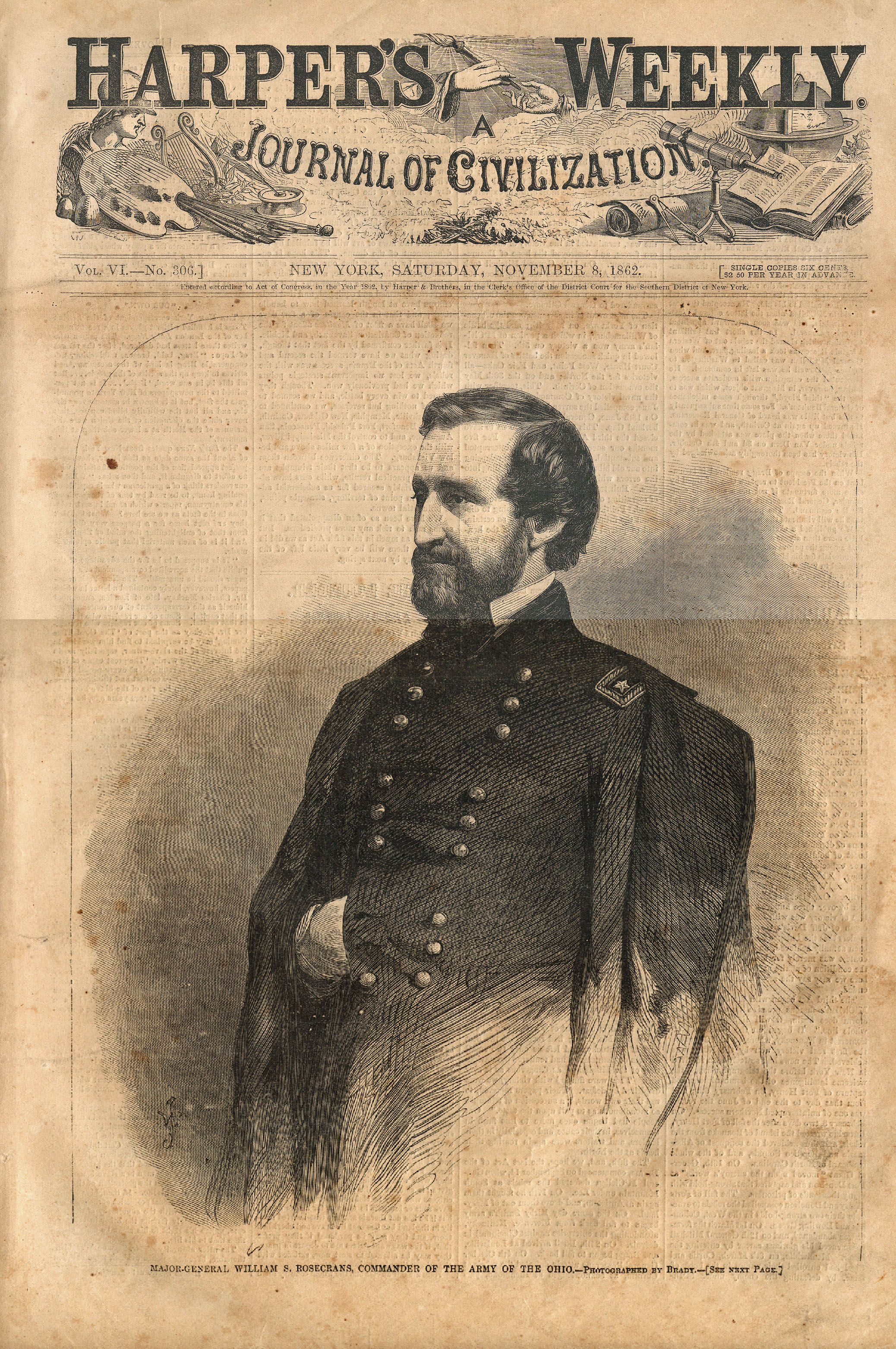 |
|
An original
copy of this newspaper is on display in the Myers Inn Museum |
- On November 8th, 1862, Mathew Bradley's photo of General
Rosecrans filled the entire front page of New York's
Harper's Weekly.
- On November 9th, Julius Garesché,
a Catholic friend of Rosecrans',
was appointed chief of staff to General Rosecrans. He had
was a kind, articulate man and a favorite among the men. His
story is a sad one but one worth taking the time to read.
- On Christmas night he met his corps commanders
for a "consultation" which ended with, "We move tomorrow,
gentleman! . . . Spread out your skirmishes far and wide.
Keep pushing ahead. Expose their nests. Fight and
keep fighting. They will not stand it."
|
|
Battle of Stone
River |
|
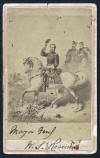 |
- On December 30, 1862 the four day battle of Stone River began.
Rosecrans won.
- At the left the General is riding into battle with his Chief
of Staff Garesché and Capt. C.
Goddard. This is to be the last ride for
Garesché. Rosecrans'
telegram to the War Department tells of his death.
He was buried in
Mt. Olivet
Cemetery in Washington D.C.
- Sometimes it helps to see an
animated version of the battle.
Battle of Perrysville and Stones River- Animated from
HistoryAnimated.com
- Rosecrans rode Boney, his favorite gray, at Stone River
|
 |
- W.D.B.,
(William Denison Bickham), a
correspondent from Cincinnati Commercial, a
newspaper, penned an account of the battle complete with
battle maps.
- David Moore calls this battle the
turning point
of the Civil War.
|
-
In an editorial in
The New York
Times on January 7, 1863, the editor noted, "What,
then, is his advantage? We believe it lies in his invariable
practice of being personally present on the field of battle,
where he sees for himself every movement, gives the appropriate
command without delay, and, if necessary, takes an active part
personally in the struggle."
-
"Have We A General Among Us?" asked
Harper's Weekly on January 17, 1863. The article carried high praises for
Rosecrans. "He
saved the day, and repelled the enemy, by galloping into the
thick of the fight, and reanimating his troops by the spectacle
of his courage. He is a man of enthusiasm, as well as a man of
calculation: when his army fights, he is with them."
-
In December
1861, the
Appleton Post-Crescent ran this American Heritage article
Who Won at
Murfreesboro?
|
-
Following the Battle of Stones River, the
Indiana Legislature sent a proclamation to General Rosecrans and
his men thanking them for protecting them. In response,
General Rosecrans wrote a very stirring letter to thank Indiana
for its kindness and to apprise them of conditions his men were
facing. The New York Times carried this letter in
March 1863.
He tells of some of the atrocities of war and praises his men
for continuing to stand up for their nation. The General
writes, "I speak the conviction of the officers and men of
this army, when I say we fight to secure equal rights to all,
under the Constitution and the laws -- we fight in defense of
our homes and hearths, sure to be invaded, if the rebel despots
who began the war, can get the power. But we long for peace --
we pray for peace, and we fight for peace -- not for a
dishonorable peace -- not for a hollow truce. We have once been
deceived by the cry of "No coercion," and of "State rights." and
have seen how the rebel leaders practice, in East Tennessee,
Missouri, Western Virginia and Kentucky. We have met the masses
of the South, and are witnesses of the falsehood, calumny and
perfidy by which they have been led to wage war against us. We
have seen flags of truce violated -- hospitals, ambulances and
boats, bearing flags, fired upon, and our sick and wounded
stripped of their blankets and robbed of their food and
medicines -- we have been approached in battle by rebels wearing
our uniforms and carrying our colors."
|
- John Fitch added the following testimony of Rosecrans
ability and worth from an enemy, a correspondent of the Commonwealth in Atlanta, Georgia,
who wrote this two months after the battle of Stone River:
"General Rosecrans is a man of
more than ordinary ability. In all the various positions
in which he has been placed, he has exhibited the most untiring
industry and indomitable energy. He is an accomplished
engineer, a wily strategist, and a brave and prudent leader.
He is undoubtedly the ablest general now in the Federal army.
He is very different from the native Yankee, being bold, frank,
outspoken, and possessing the dash and manner of the
Western people. He is the idol of his officers and men,
and possesses their entire confidence to an eminent degree.
He will fight; and he impresses it upon those about him that
hard licks alone will end the war.
|
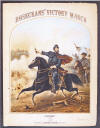 |
-
"Socially, General Rosecrans is modest, refined, polite, and
affable. He would command respect and confidence in any
community. In person he is five feet ten inches, and in
weight about one hundred and sixty pounds. He stands very
erect, with military dash and bearing strongly depicted in his
person. His features are mild, but there is striking
expression in his clear gray eyes. His complexion is
florid, hair slightly tinged with gray, and his features and
person would be called handsome. General Rosecrans is a
devoted member of the Roman Catholic Church."
|
 |
- General Rosecrans was a letter
writer. Two of his letters written during this time back
to Ohio were published in a book titled,
A Savoury Dish
for Loyal Men
|
-
General Rosecrans at
High Mass on the
Battle-field of Stone River. The priest in the woodcut
looks a lot like his brother,
Father Sylvester H. Rosecrans.
From Cincinnati Bishop Rosecrans often visited
his brother during the war to pray with him and with his
soldiers before battles. Religion was such a strong part of
General Rosecrans life and his men remembered him taking time to
pray with them and even his ordering men to fast so they could
take communion before battles.
|
-
Two events of
this battle are recounted annually. Around the end of
October, the press tells the story of the
Headless Horseman.
-
Around
Christmas, the animals are remembered in
A-Civil-War-Christmas-Story-from-Stones-River.
-
A bugler with the army known as
Frank Martin,
was a woman but the men did not know it. Her story is told
by Larry Eggleston in his book, Women of the Civil War.
-
Pauline
Cushman was an entertainer who narrowly missed being hung as
a spy for General Rosecrans in March 1863. Pauline Cushman
|
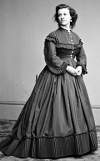 |
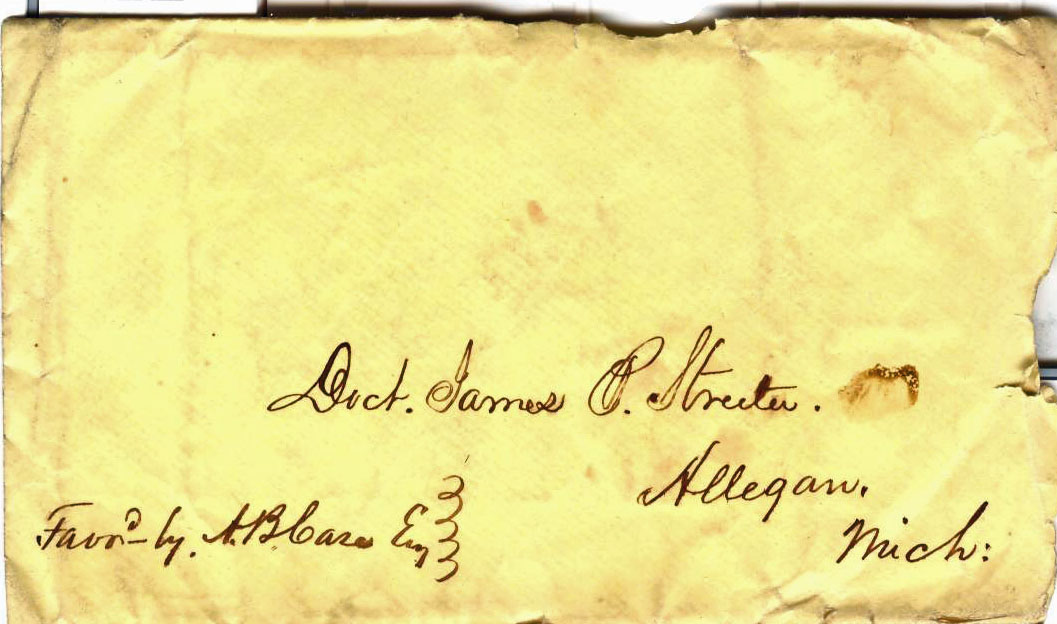 |
- Dr. James P. Streeter wrote home to his
sister in Michigan in April 1863. He says his unit is
building a railroad station in Murfreesboro. General
Rosecrans came every day to check the progress of the station.
The men thought that was "right smart of him." James goes
on to tell about the food and the living conditions of his unit.
|
"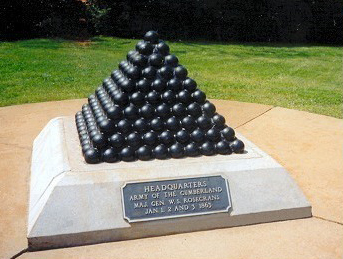 |
|
There is a unique site about
West Point in the Making of America featuring the
Travis Army of the Cumberland Panorama. |
|
|
|
|
|
|
|
|
|
|
Tullahoma
Campaign |
-
The Battle of Stones River had left both
armies tired and hungry. Rosecrans had lost a lot of
men and needed reinforcements which meant more new men to train.
When Rosecrans was ready to move he had 50,017 men to Bragg's
46,665.
-
Railroads were heavily damaged cutting off
supplies. Confederates were taking supplies from the boats
on the Cumberland River.
Wagon trains were
organized to carry supplies.
-
Rosecrans needed horses for his cavalry as
well as draft horses to pull the supplies. Because of the
shortage of good horses needed by the cavalry, Col. John
Wilder formed a mounted infantry using locally found horses and
Spencer repeaters.
|
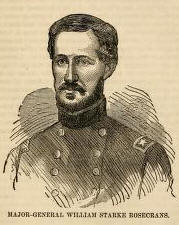 |
-
Morale became a big problem. The Emancipation
Proclamation had been signed during the the battle of Stones River
and the soldiers who were fighting for the preservation of the
United States were not sure they should be risking their lives for
for people of another race. Rosecrans, an abolitionist,
convinced his men other countries would not support slavery and
therefore not help the South. He urged them to become "Pragmatic
Abolitionists."
-
Weather
was also holding Rosecrans back. According to
William Wood Rosecrans
reported: "The winter rains made the roads impassable for large
military operations..... Meanwhile we hardened our cavalry, drilled
our infantry, fortified Nashville and Murfreesboro for secondary
depots and arranged our plans for the coming campaign upon the
opening of the roads, which were expected to be by 1st of May 1863."
In Washington, Stanton and Halleck
saw a relaxed army commander
stalling for time until he was good and ready to move.
-
Rosecrans
also used this down time to prepare maps for the next campaign and
learn all he could about the terrain.
-
On June 22, Confederate General Morgan with 2,300 cavalry
began his second raid which would lead him through Kentucky, Indiana
and Ohio and into the Ohio penitentiary in Columbus, Ohio. Rosecrans
chose this time to move after 169 days of rebuilding his army.
While he angered his superiors by waiting, he was well prepared when
he moved.
-
Rosecrans had full accurate descriptions of
Bragg's defenses and knew frontal attacks would be costly and
hazardous. Lamers writes Rosecrans
feigned in one direction and thrust elsewhere. Had it not been
for days of heavy rain which made roads impassable, mired wagons and
smothered horses when they sunk in the mud, it is very likely
Rosecrans would have overtaken and destroyed Bragg's army.
-
Instead from
June 24 through July 7, 1863, Rosecrans drove Bragg
out of the middle of Tennessee in the least bloody of any major
victory of the war. On the Union side 83 were killed, 473
wounded and 13 captured or missing. 1.634 Confederates
were captured including 59 officers. 616 claimed they
delivered themselves voluntarily and 96 joined the Union army.
The Reno
Evening Gazette remembered this in 1913.
-
Stanley said: "If any student of
military art desires to make a study of a model campaign, let
him take the maps and General Rosecrans' orders for daily
movements of this campaign. No better example of
successful strategy was carried out during the war than in the
Tullahoma Campaign."
-
Geologist, Andrew Brown claimed Rosecrans' military genius came
from obtaining and using topographic information.
During the Tullahoma Campaign, Rosecrans used his geological
perspective to allow the Union forces to outflank the
Confederate defensive position without giving battle. This
is one of the best planned and executed achievements of the war.
-
Meanwhile on July 4th, Grant was victorious.
Vicksburg surrendered. Confederate General Lee was
defeated at Gettysburg. But Bragg still had his army and
Rosecrans' operation was ignored.
|
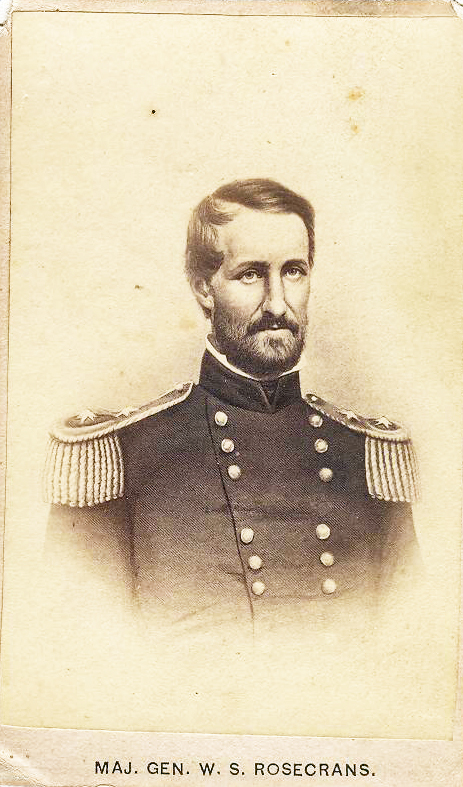 |
-
Instead from
June 24 through July 7, 1863, Rosecrans drove Bragg
out of the middle of Tennessee in the least bloody of any major
victory of the war. On the Union side 83 were killed, 473
wounded and 13 captured or missing. 1.634 Confederates
were captured including 59 officers. 616 claimed they
delivered themselves voluntarily and 96 joined the Union army.
-
Stanley said: "If any student of
military art desires to make a study of a model campaign, let
him take the maps and General Rosecrans' orders for daily
movements of this campaign. No better example of
successful strategy was carried out during the war than in the
Tullahoma Campaign."
-
Geologist, Andrew Brown claimed Rosecrans' military genius came
from obtaining and using topographic information.
During the Tullahoma Campaign, Rosecrans used his geological
perspective to allow the Union forces to outflank the
Confederate defensive position without giving battle. This
is one of the best planned and executed achievements of the war.
|
- Meanwhile on July 4th, Grant was victorious.
Vicksburg surrendered. Confederate General Lee was
defeated at Gettysburg. But Bragg still had his army and
Rosecrans' operation was ignored.
|
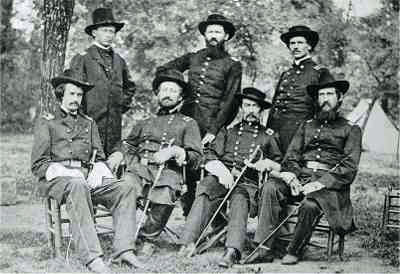 |
-
July 7th to August 11 was
used to rebuild railway bridges and
trestles, and put roads in order. As
soon as the corn had ripened for food and forage, Rosecrans made his move to
cross the Tennessee River. By concealing his crossing points and
misdirecting Bragg's attention, he forced Bragg from `Chickamauga.
Due to faulty intelligence, Rosecrans thought Bragg's army was
retreating in disorder then in reality, it had taken a strong
position behind Chickamauga (a local Indian word meaning "river
of death") Creek.
-
Photo link at the left will take you to the
identification of the General's Staff.
|
-
By now the princely rations of hard-tack,
bacon and coffee were gone although the memory of it was left.
It was replaced with parched corn and cobs. Then the rains
came and the men walked their beats in summer blouses and worn
out shoes. They could see the Confederates were in the
same shape.
-
At the 1896 Reunion of the Society of the
Army of the Cumberland.
Captain Charles
Belknap's address told how the Cracker Line came to
be. On September 23, Rosecrans sent for Captain
Perrin V. Fox and told him "I want a pontoon bridge across the
river east of Cameron Hill as soon as possible. You have
carte-blanche to take anything you can find for it." Fox
found some resawed planks suitable for boats, balks, side rails
and roadway planks but they were too short to make boats of the
regular size so he designed a wider boat with a triangular bow
to resist the current and perpendicular sides so it would settle
evenly in the water when it was loaded. He had a support from
bow to stern on which to fasten the balk could be locked and
fasted by ropes to keep them in place and sustain the weight
when loaded. The timber was long enough to give space between
the boats. When Fox took his plan to Rosecrans, the chief
engineer General Morton ridiculed it but Rosecrans saw the merit
and told Fox to carry on. They made two boats the next day
which held well when Rosecrans got in one. The calculated
weight for each boat to hold was 7,800 pounds.
There was no lumber strong enough to go across the boats to make
a bridge so Fox took down houses to get the beams and by October
7, wagons began to pass over the bridge. The Cracker Line was
born. Rosecrans ordered another bridge and gave Fox the sawmills
and men he needed to do the job. The boats for this second
bridge were used to ferry the troops before the bridge was
constructed.
|
-
Meanwhile, on October 3,
Rosecrans wrote to President Lincoln with a proposal: "If
we maintain the position in such strength that the enemy are
obliged to abandon their position, and the elections in the
great States go favorably would it not be well to offer general
amnesty to the officers and soldiers in the rebellion?
It would give us moral strength and weaken them very much."
Lincoln replied, "If we can hold Chattanooga and East Tennessee,
I think the rebellion will dwindle and die." Rosecrans' letter
gave his enemies more fodder.
|
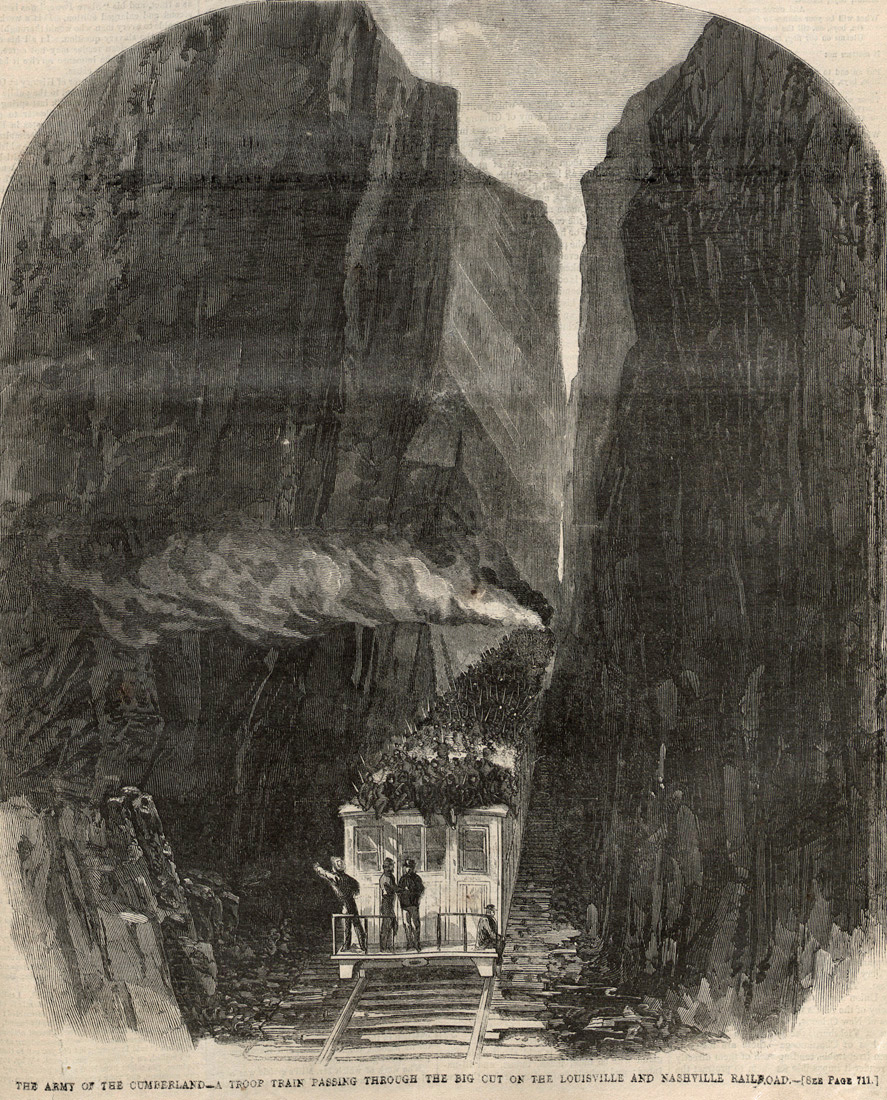 |
A drawing by Mr. Theodore Davis shows a troop train going through
the Big Cut in the mountain along the route from Louisville to the
Army of the Cumberland with soldiers on top of the train. Mr.
Davis found the scenery grand and the troop spirited. |
|
Battle of Chattanooga,
Chickamauga |
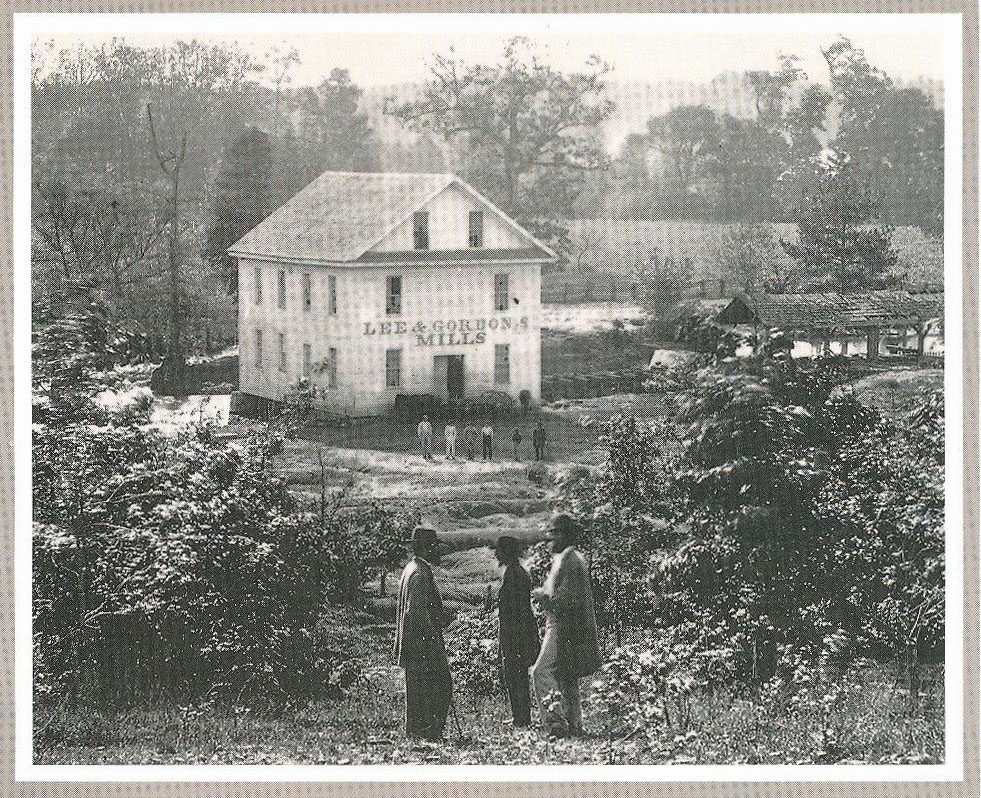 |
-
Gordon Mansion at Crawfish Springs, Georgia,
was the Headquarters for General Rosecrans for a few days
in September 1863. Unfortunately the Confederate troops
were closer than his Union troops. During the battle it
was a Federal field hospital.
- Lee and Gordon Mills was the scene for a battle.
|
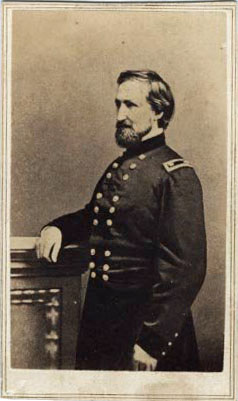 |
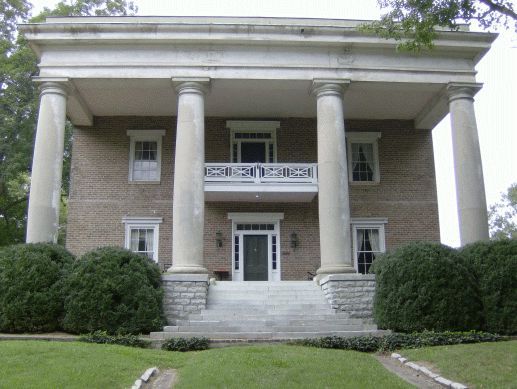 |
-
General Rosecrans alternately rode Boney, his
favorite gray horse, and Tobey, a mettlesome dappled gray,
during the battle.
|
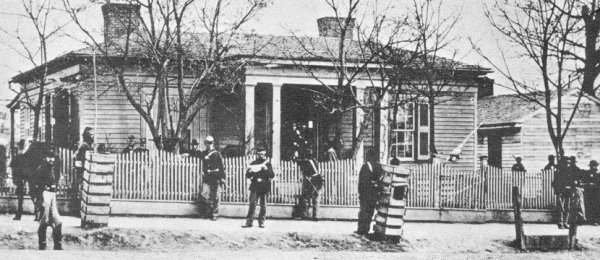 |
Rosecrans' Headquarters during the 1863 siege of Chattanooga. |
-
Confederate General D. H. Hill wrote in
Chickamauga, Great
Battle of the West that "At the beginning of the Civil
War I was asked the question, "Who of the Federal Officers
are most to be feared?" I replied, "Sherman,
Rosecrans, and McClellan. Sherman has genius and daring,
and is full of resources. Rosecrans has fine practical
sense and is of a tough, tenacious fiber. McClellan is a
man of talents, and his delight has always been in the study of
military history and the art of science and war." Grant
was not once thought of."
-
Wood in Rosecrans and His
Chickamauga Battle
states Bragg said "Rosecrans must not capture
Chattanooga." It was the line to the southern cities.
|
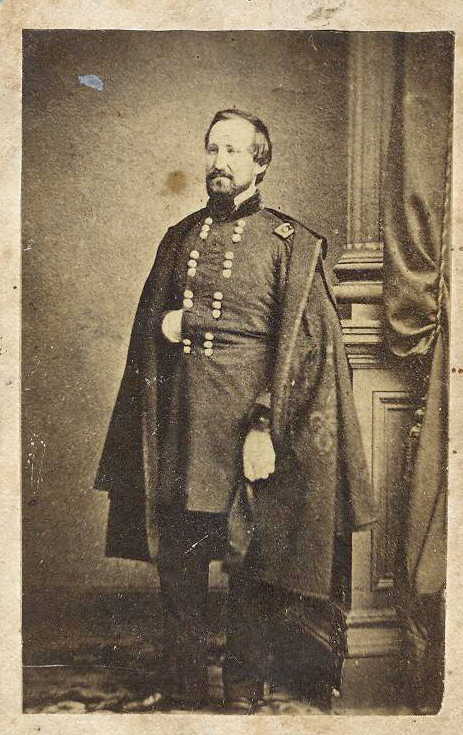 |
- Rosecrans needed to get across the Tennessee River without
alerting the Confederate General Bragg who was on the other side
of the river at the important rail center in Chattanooga.
Rosecrans decided to deceive the enemy to the Union point of
crossing. August 16, 1863, Rosecrans ordered bulk of
his army southwest where they could cross the river while
Brig. Gen. William B. Hazen was ordered to feint an attack on
Chattanooga from the north. Using Col. John T.
Wilder's mounted Lightening Brigade (9,000 men) began making
feints for forty miles above Chattanooga as though they were
getting ready to cross the river. "Details were made
nearly every night to build fires indicating large camps, and by
throwing boards upon others and hammering on barrels and sawing
up boards and throwing the pieces in streams that would float
them into the river, we made them believe we were preparing to
cross with boats." By the time Bragg realized he had been
hoodwinked, the bulk of the Union army had crossed the river was
poised at the rear making Chattanooga untenable for Bragg. On
September 7th Bragg abandoned the railroad and Rosecrans
reported "Chattanooga has been taken without a struggle.
Union Maj. Gen. William S. Rosecrans had just pulled off of the
most brilliant
strategic deceptions of the entire war.
|
|
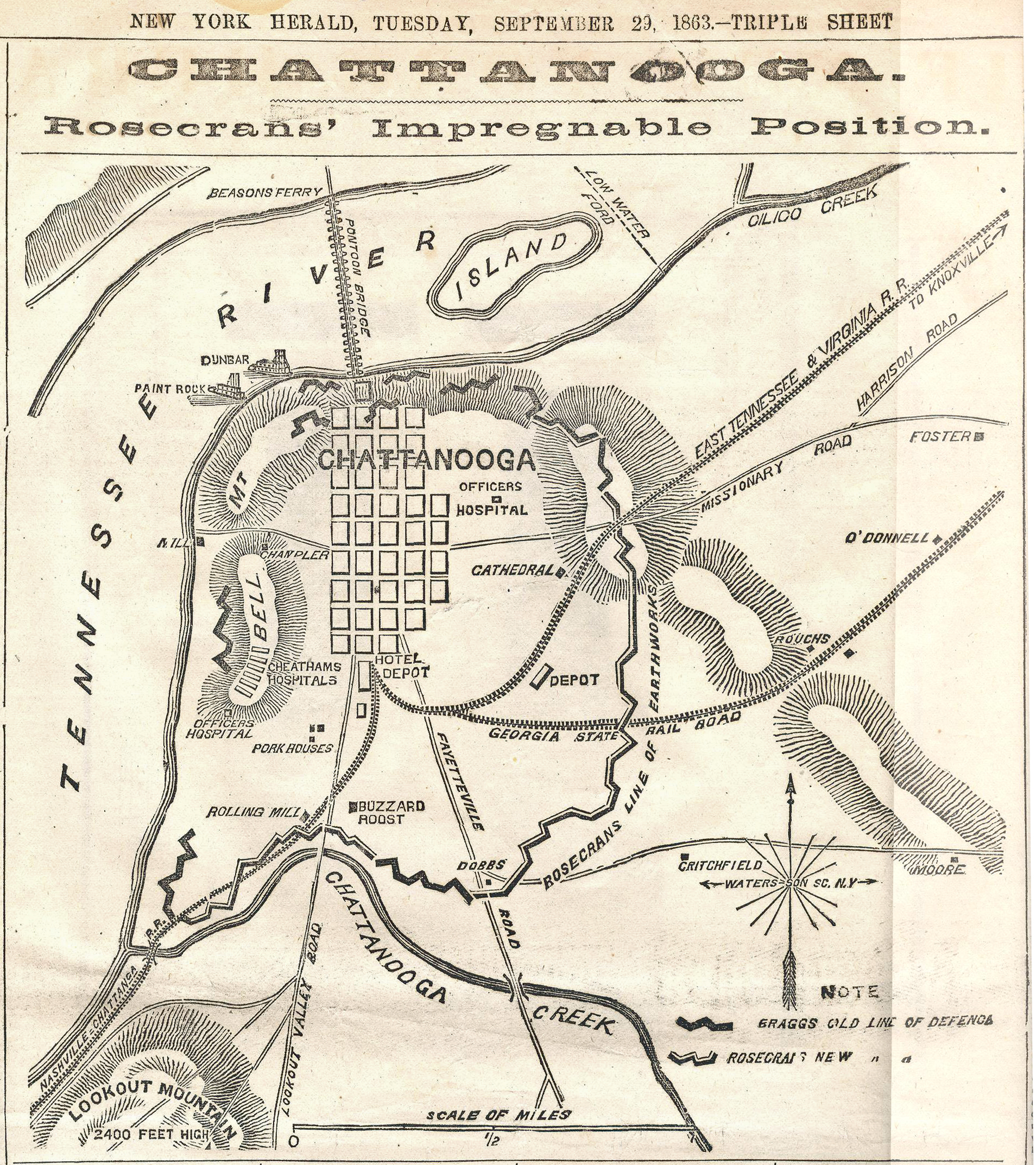 |
- Rosecrans secured Chattanooga for the Union. This map
was published in New York Herald, September 29, 1863. With
it is a page of
comments about the war.
- In 1938, the residents of
Walker County,
Georgia, remembered the war from the view of civilians as
they saw their homes and lives shattered.
- During the battle of Chickamauga.
General Wood a division commander, received
conflicting orders and chose to follow one without checking to
see why the orders did not make sense. This made a
hole in the line and Bragg took advantage of it, thus
defeating the Union troops. Chickamauga went to Bragg and
Rosecrans fell back to hold
Chattanooga.
-
Captain Gaw,
of Thomas' staff, was ordered to guide Rosecrans and his staff
to Chattanooga by the shortest possible route and took him over
the ridges of the Day Valley road and then said "General this is
the direct route to Chattanooga, I trust you will permit me to
return to General Thomas." Rosecrans agreed and started to
give Gaw messages for Thomas but Gaw suggested he should send
his Chief of Staff. Thus Rosecrans directed Garfield
to return to the field and tell Thomas that Rosecrans had gone
to Chattanooga to prepare for the reception of the Army when it
should fall back.
|
|
|
|
|
|
|
|
|
|
-
Garfield was in position to write
orders for Rosecrans. Did he sent the wrong order or
fail to sent the right order?
Theodore Smith,
a Garfield biographer, noted Garfield avoided putting anything
in writing about that day. Perhaps he saw his opportunity for
political gain. It appears he and Charles Dana, sent by War
Secretary Stanton to spy on Rosecrans, were slipping
negative comments to Washington. A letter from Garfield to
Chase was very damaging. Chase held the letter then finally
took it on to Washington. Unfortunately not until Volume XXX of the Official Records was published in 1890 did Dana's true role
become public, then he tried to blame Garfield.
|
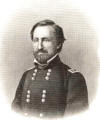 |
-
Chaplain Thomas Van
Horn, who wrote a history of the Army of the Cumberland and the
Life of General George H. Thomas, told John Beatty Garfield was not
the hero of Chickamauga and his presence had no influence on the
battle, he made no important suggestion to Thomas, and was after his
return simply a spectator.
-
James M. Perry has a chapter
on Chickamauga and how it helped make Garfield president.
|
-
As often happened in this war, politicians made the
decisions and if the voters were unhappy, the generals had to
go. Rosecrans had already made enemies in high places so
they were quick to relieve him of duty.
-
Rosecrans was under siege after retreating to
Chattanooga, and when Grant was given overall command of the
Western theater, Lincoln gave him two sets of orders. One
was to relieve Rosecrans and the other was to retain him. Grant
chose to rid himself of Rosecrans, whom he hated.
|
-
Major General Thomas was given the command of the Army of
the Cumberland. He
went to Rosecrans and said he felt this
never should have happened and would refuse the command.
Rosecrans told him he must not do that as the army needed a
commander. Rosecrans gave Thomas his plans for taking
Wauhatchie. The two men continued to be friends the rest of
their lives.
- On October 22, 1863,
the New York Times said his "removal had been contemplated for
some time."
- On October 26, 1863, the Richmond
Examiner carried the following:
Meantime, Lincoln is helping us. He has
removed from command the most dangerous man in his army, and put
two fools in his place. A variety of mean and damaging
pretexts for Rosecrans' removal have been published by the
yankee press. But the true reason is that he failed at
Chickamauga, and the abolitionist government adheres to its
system of dismissing every general who incurs defeat.
Lincoln has, however, more reason than usual for the act, if it
be true that he desired Rosecrans to stop at Chattanooga and if
the latter attempted his Napoleonic operation in Georgia on his
own responsibility. That extraordinary slip can only be
explained on the ground that the yankee's head had been turned
by his success in Tennessee.
Rosecrans, thus retired, is unquestionably the
greatest captain the yankee nation has yet produced. His
performances in the field are too fresh in the memory of reader
to necessitate recapitulation. We may mention in proof of
his intellectual abilities that he graduated fifth in a class of
fifty-six, in which General G. W. Smith graduated eighth and
Longstreet fifty-fourth.
-
On October 28, 1863, the
Cincinnati Daily Gazette ran the following two items:
News of the Day
General ROSECRANS' removal from the command of the Army of
the Cumberland has caused two sensations in Washington.
In the first place, the lying correspondents of some of
the newspapers caused a sensation by their infamous slanders,
manufactured, perhaps, for the purpose of creating a public
opinion, to sustain an act of
injustice. The second sensation is
caused by General Rosecrans' speech in this city, which upset
the sensational and lying stories put afloat a few days ago.
Our correspondent says the public at the Capital now
require some statement from the Administration as to Gen.
Rosecrans' removal. In the meantime the
latter officer occupies a favorable position.
He stands before the country as one of our best and most
successful generals who failed to win a complete victory at
Chicamauga, because he was not properly sustained by the
government; and who is now without a command because he thus
failed. This is the way the people look at
it; and the blame that was sought to be cast upon the hero of so
many victories, is now transferred in a lump
to Washington to be borne by the President, Halleck or Stanton.
When Congress meets we
shall probably know the pair of shoulders destined to
carry the load.
LATEST BY TELEGRAPH
General Rosecrans
General Rosecrans' remarks at Cincinnati, produce a decided
sensation here. The friends of the
Administration admit that his statements render some further
explanation necessary, and at the same time leave him in a
satisfactory position.
-
After reading an account of
Rosecrans' remarks in Cincinnati,
James A. Connolly
wrote home to his wife on November 5, 1863 from
Chattanooga:
"I am as confirmed an abolitionist as ever was pelted with
stale eggs, but I rarely think of it except when I see the
operations of old stay-at-home politicians to drag down and ruin
every earnest man who, in these days of action and earnestness,
is supplanting them in the affections of the people. Rosecrans
relieved! Then comes the starveling crew of home politicians to
defame his character, to defame a name that should stand bright
on the pages of history, to steal away laurels that such as they
can never win. If such men and such reports are to mould public
opinion, God help the Republic! I have no patience to think
about it, much less to write about it. The scoundrels! How can
men be so depraved? General Rosecrans was my beau ideal
of a leader; I would follow him with the devotion of the
crusaders for "Peter the Hermit." This entire army was
an army of crusaders under his leadership. He was the light and
life of this army. When the order for his removal was made
public this army said nothing, it was dumb, the blow was too
sudden and too severe for speech; we all now pursue our way
quietly, as soldiers bound to obey the orders of our superiors;
we used to obey because we loved our leader, but let it be
announced tomorrow that Rosecrans was to command us again, and
every silent tongue in this quiet army would find a voice, whose
loud acclaim would almost wake again to the deadly shock our
sleeping comrades on Chickamauga's banks. But enough; we'll
triumph under Grant, just as well as Rosecrans, and perhaps it
is right that Generals should be dealt with unjustly
sometimes, as well as privates."
|
- In 1864 James Garfield took his seat in the House of
Representatives and was re-elected every two years through 1878.
During that time a resolution was on the floor to honor General
George H. Thomas for his part in the Battle of Chickamauga.
There was no mention of Rosecrans so
Garfield
moved to correct the error. He felt Congress would
dishonor Thomas if they failed to recognize Rosecrans for the
campaign which culminated in the battle of Chickamauga.
After all, Rosecrans had organized and commanded the army of the
Cumberland. While Thomas deserves praise so did Rosecrans.
In 1882 David Hosterman in his biography of Garfield notes, "The
nation now knows that Garfield was right, that Rosecrans was one
of the ablest soldiers and purest patriots that helped to
crush the Rebellion."
|
-
The Editorial which ran in the
November 14, 1863
issue of the Army Navy Journal definitely felt
Rosecrans should not have been removed from command.
It states bickering among Mr. Stanton, Ga. General Halleck and
Rosecrans as the true cause of his removal. They do not
mention Grant's part but perhaps it was not yet known so soon
after
the battle. The Editor did understand Rosecrans' reasons
for delaying until his army was ready and the road were passable
before proceeding but Washington, including President Lincoln,
felt he should have moved sooner.
-
On October 31,
1881 the New York Times carried an unsigned Letter to the
Editor blaming the entire incident on Rosecrans.
A reporter interviewed Thomas
Nicholas,
a well known friend of the late President
Garfield, in Chicago in 1882 about
the Garfield-Chase-Rosecrans Letter and President Garfield's relationship with Rosecrans. Nichols
implied Garfield felt Rosecrans had not managed the army well
but this was his opinion vs. Rosecrans. Nichols went on to say Grant felt Rosecrans could not take orders and would
have destroyed the Army.
|

|
|
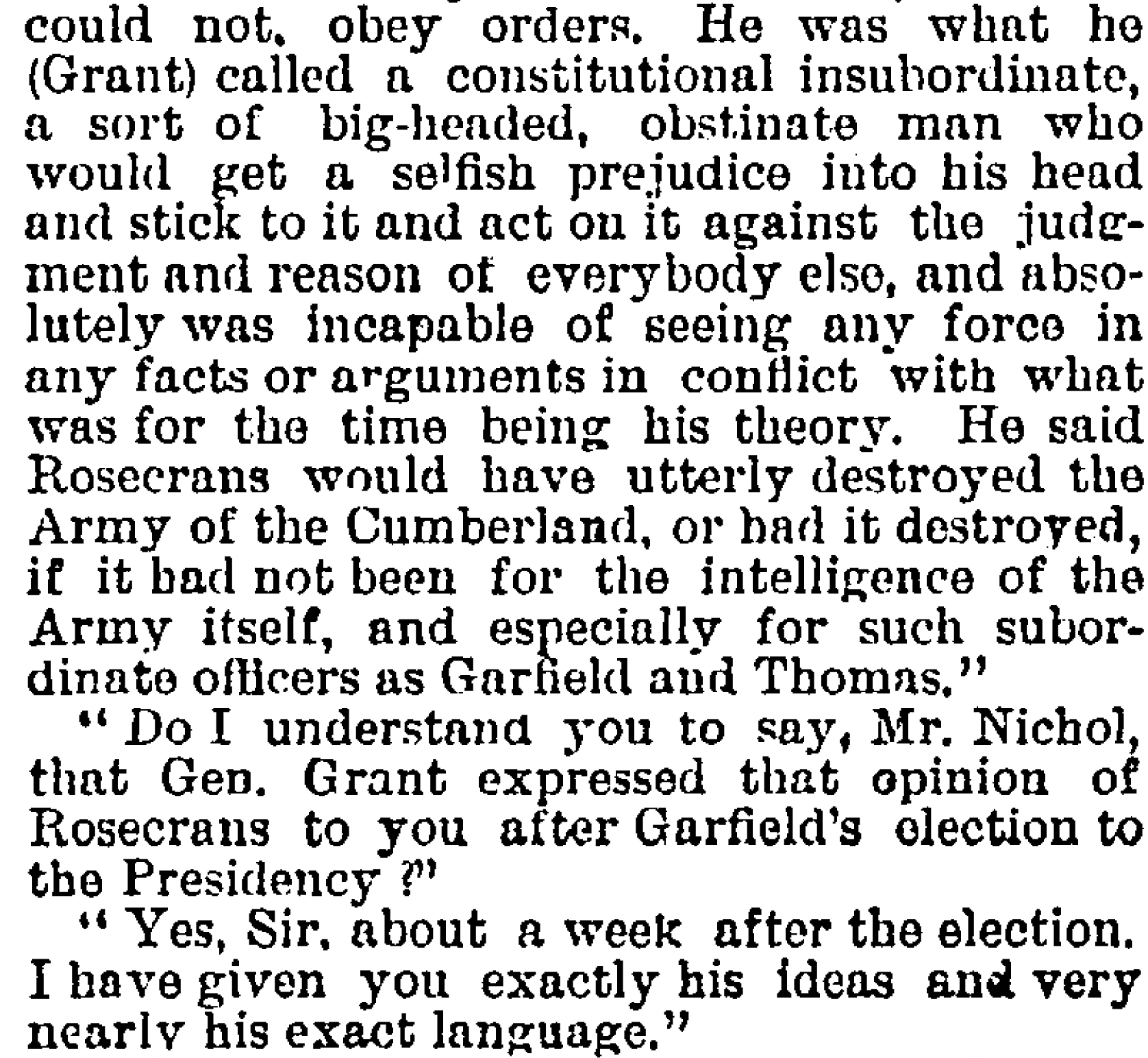
See the entire
article
|
-
Hiram Grant, a.k.a. U. S.
Grant continued
throwing barbs at Rosecrans when he wrote his Personal
Memoirs with Mark Twain in 1885-6. This
two volume set was immediately a best seller and thus the public
accepted Grant's version as truth.
- Others such as
Beadle accused Grant of not telling the truth.
Edward A. Pollard in
Southern
History of the War (1865), wrote:
[Robert
E. Lee's Western Virginia campaign], after its plain failure,
was virtually abandoned by the Government. Rosecrans was
esteemed in the South as one of the best generals the North had
in the field. He was declared by military critics, who could not
be accused of partiality, to have clearly outgeneraled Lee, who
made the entire object of his campaign to "surround the Dutch
General."
|
- I can not leave this battle without allowing Major General
William Starke Rosecrans to tell us what really happened when
Major General Thomas took over the command. On March 21,
1882, he was asked to address the reunion of the Army of the
Cumberland in Chicago.
How General Thomas Came to be the Last Commander of the Army of
the Cumberland.
- Then in July 1885,
The North American
Review carried an eighteen page article entitled
The
Mistakes of Grant by William S. Rosecrans.
- Whitelaw Reid said of Rosecrans, "The enemies whom he made
by his sturdy honesty dealt him their fatal blow at the
unkindest moment. Rosecrans had never been more active,
more enterprising, more skillful, than after Chickamauga."
- The marker
to the Battle of Chickamauga.
- Should you feel this writer is biased, take time to read Lt.
Col. Robert J. Dalessandro's
Major General William S. Rosecrans and the Transformation of the
Staff of the Army of the Cumberland: a Case Study (2002).
- General Rosecrans went back to Cincinnati to wait for
orders. Grant decided to assume personal charge of the Federal
forces: but before he reached his command, Thomas, ably assisted
by his chief engineer, General W. F. Smith, had begun to act on
a plan which Rosecrans had
conceived,
and which proven in the end to be a brilliant conception.
|
- Ed Nice took a trip to Lookout Mountain in 2011 and sent me
the following photograph of a park sign. It tells the
Chattanooga story.
|
|
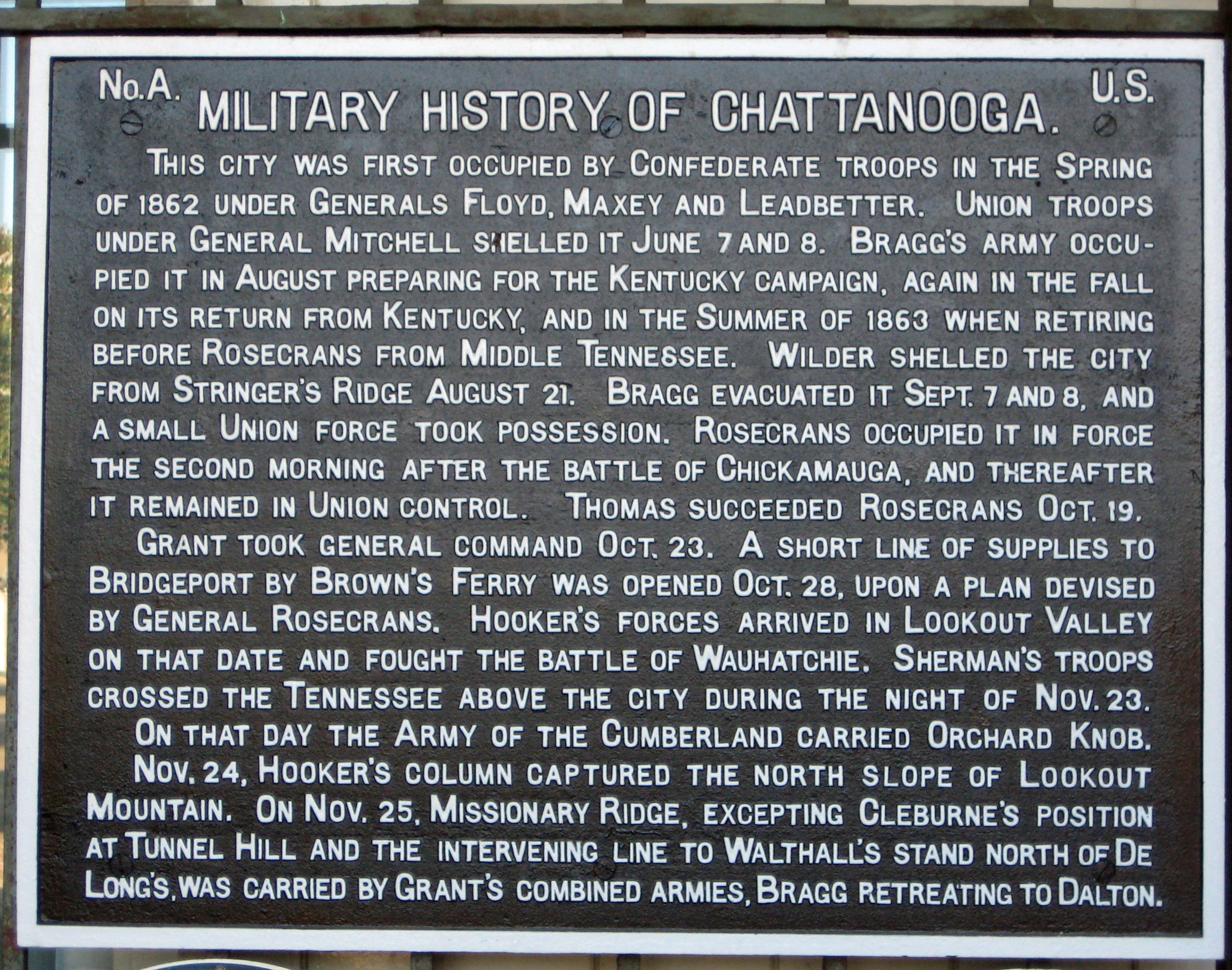 |
- Father Sylvester was president of the school, Mount St. Mary's. Following Chickamauga William's family was living
next door in a stone house called "Roccabella" which had been the
convent. Sylvester would often spend his
afternoons at Roccabella playing and reading with the children.
Later when William was gone and the family could not go with him,
Sylvester stepped in to help Anne.
Price Hill Historical Society says the home at
2935 Lehman Road in Price Hill
is where General Rosecrans stayed. Is this Roccabella?
|
|
 |
|
2935 Lehman Road |
- While Rosecrans could have sat around and felt sorry
for himself, he organized the Great Western Sanitary Fair in
Cincinnati which ran from December 21, 1863 until January 9th
1864. It raised money for wounded and disabled soldiers.
|
|
Department of
the Missouri |
|
 |
- January 1864 Rosecrans assigned to head of
Department of
Missouri in St. Louis. The troops were reduced from
68,425 at the end of 1863 to only 660 officers and 16,323 men
present for duty. Rosecrans asked for out of state troops to
police western Missouri. Halleck approved the plan but
could send no men. Grant insisted Rosecrans had more men
than he needed. Four regiments marched to Mississippi to
General E. R. S. Canby leaving Rosecrans without sufficient
forces to guard the depots, railroads and communications he had.
- Rosecrans began recruiting all eligible men and slowly
raised his own troops to defend St. Louis and insure fair
elections.
|
|
Major General Rosecrans |
-
His predecessors in this post had encountered
insuperable obstacles
in administration but Rosecrans still tried to overcome them.
-
Although Rosecrans still had some friends in Washington his
requests were usually refused.
-
Even with this obstacles, Rosecrans "so managed and
concluded a campaign against the Confederate General Price, that
his army was defeated and driven out of the state,"
noted in "The Union
Army."
-
Although the last public auction of slaves in
St. Louis took place on Jan.1,1861,
slaves
continued to be sold in the city discreetly with traders sending
slaves to auctions in Kentucky. General Rosecrans ordered the
sale practice stopped on March 1, 1864. He sent orders on
procedures to allow former
slaves to enlist
in the army.
|
- In March 1864, there was a Sanitary Fair in Washington D.C.
to raise money to support the troops. From Missouri, Major
General W. S. Rosecrans sent his signature to be used on this
quilt. In 2011 the quilt is on display in the Ford Theater
Museum as the nation remembers the sesquicentennial of the Civil
War.
- After great success with the Sanitation Fair
in Cincinnati, General Rosecrans was ask to help with the
Mississippi Valley Sanitary Fair in St. Louis
which opened in the middle of April 1864. During his
speech at the opening day of the fair, he urged people to allow raffles to
raise money for relief of soldiers. The event raised
$614,782.28. $554,591 was clear profit for relief of
soldiers and their families as well as for
freedmen and
their families and for the Women's Relief organization who put
on the fair.
|
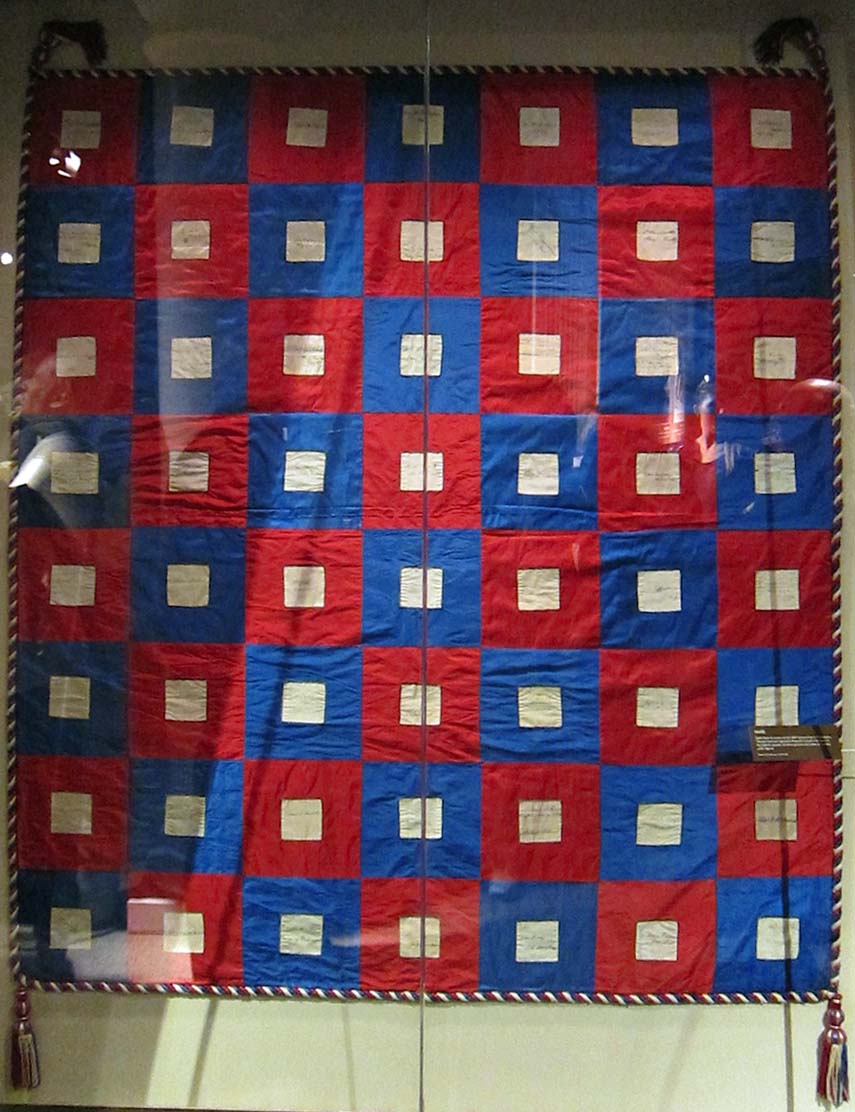 |
-
After great success with the Sanitation Fair
in Cincinnati, General Rosecrans was ask to help with the
Mississippi Valley Sanitary Fair in St. Louis
which opened in the middle of April 1864. During his
speech at the opening day of the fair, he urged people to allow raffles to
raise money for relief of soldiers. The event raised
$614,782.28. $554,591 was clear profit for relief of
soldiers and their families as well as for
freedmen and
their families and for the Women's Relief organization who put
on the fair.
-
In James Gilmore's
biography of Lincoln
he tells of Horace Greeley sending him to interview Rosecrans about
serving as Lincoln's running mate. He remembers telling Rosecrans
of a proposal from nearly all the Republican leaders, Sumner,
Conkling, and Wilson excepted, to make him a candidate for the
Presidency. Greeley had promised, if the mission should be
successful, to "go to Lincoln and force him to resign." Hamlin." he
said, "will give Rosecrans command of the armies, and there'll be a
chance of saving the country." Garfield highly approved the
project but when it was opened to him, Rosecrans said: "The
good opinion of these gentlemen is exceedingly gratifying to me, and
so is yours. . . . but my good friend, it cannot be. My place
is here. The country gave me my education, and so has a right
to my military services; and it educated me for precisely this
emergency. So this and not the Presidency, is my post of duty,
and I cannot, without violating my conscience, leave it. But
let me tell you and I wish you would tell your friends who was
moving in this matter, that you are mistaken about Mr. Lincoln.
He is in this right place. I am in a position to know and if
you live you will see that I am right about him."
-
Garfield who controlled the Ohio delegation
also suggested to Lincoln he ask Rosecrans to run for
Vice-President . By then people knew he had been
unjustly handled after Chickamauga and he was a favorite among
voters from both parties.
Garfield telegraphed Rosecrans and ask him to telegraph back a
simple "yes." Garfield never got the telegram.
L. W. Mulhane felt it was "pretty well established" that Stanton
had intercepted and suppressed it. At that time the
telegraph line to Baltimore cleared through Stanton's office.
After Lincoln gave up waiting for an answer. Andrew Johnson was the nominee.
-
In June 1864, the General wrote, "For several
months I have been carefully considering your situation,
influenced by a due sense of the responsibility of my position,
and a sincere desire for your welfare. ... Daily appeals come to
me from all quarters, invoking protection for person, property,
industry and its fruits, accompanied by assurances from all,
without regard to political or sectional sympathies, that the
great mass of the people are ready and willing to unite for the
preservation of the public peace, against those who, in
violation to any law of war and humanity, under the title of
Confederate soldiers, guerrillas and bushwhackers, invade,
plunder and murder the peaceful inhabitants of your State."
As he had done in Western Virginia, the General recruited the
support of the citizens to get control of their communities and
restore law and order to the territory.
Orders 107
challenged the citizens to hold meeting, elect 3 people they
trusted to set up a pyramid of command to unite with those of
like position in other communities "for the preservation of the
public peace, against those who, in violation to any law of war
and humanity, under the title of Confederate soldiers,
guerrillas and bushwhackers, invade, plunder and murder the
peaceful inhabitants of your State."
|
- In September, 1864, General Price crossed the
Arkansas to enter Missouri along the White River. As Price
moved towards St. Louis, Sherman asked Rosecrans to send
Smith's division to him. Rosecrans refused because he was
arming every available citizen and militia man to defend St.
Louis. He pulled together 6,000 U.S. volunteers, some
Missouri militia and a civilian legion to dog Price who had
15,000 men. A starving Price was driven over the Arkansas
River
and Rosecrans returned to St. Louis in case there was trouble
with the presidential elections.
|
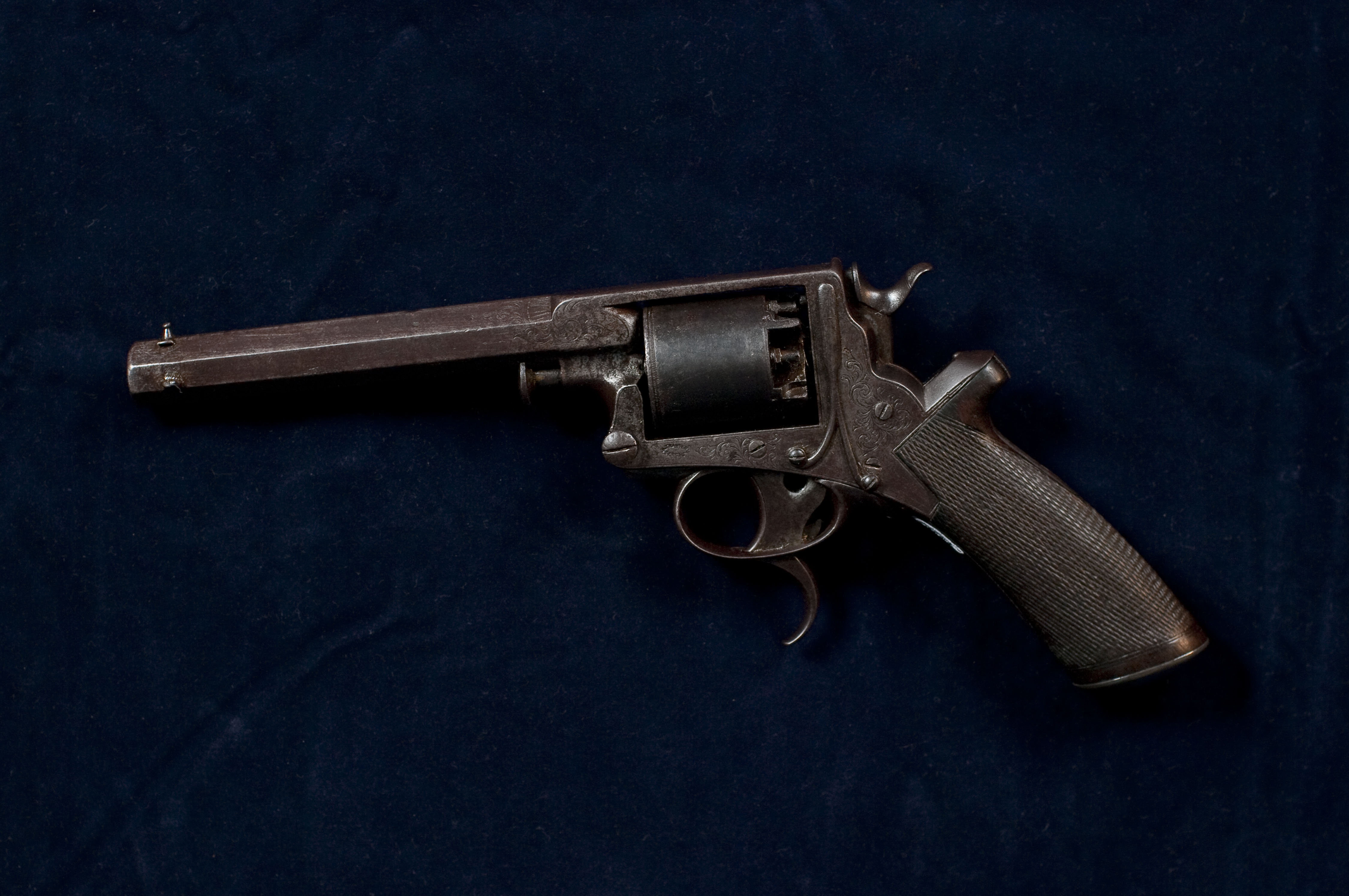
Rosecrans' Pistol
in Wilson's Creek
National Battlefield Museum |
-
Grant was sure Rosecrans was concealing 6,000
to 8,000 troops so he sent a man to investigate. Grant's
friend and personal aide, Rawlins
was to uncover the men. Instead he found Rosecrans had
sent them on as soon as the pursuit of Price had ended. Still
Grant and Halleck were not convinced. Once again Rosecrans
was marked for removal.
-
Grant wanted General Dodge to command Missouri.
"Rosecrans will do less harm doing nothing than on duty,"
he telegraphed Stanton.
-
On December 9 Rosecrans removal order came.
Rosecrans returned to Cincinnati to await orders.
-
Rosecrans ask President Johnson to assign him to California to
look into gold mining for the government but the assignment
was not made. No orders were ever made nor was he ever
told why he was relieved of duty.
- After sitting in Cincinnati for six months waiting for an
assignment and on leave for six months following the end of
the war, Major General Rosecrans was
mustered out of
the army December 28, 1865.
|
|
|
|
|
|
|
|
|
Events of the
Civil War Remembered |
- In 1938, residents of
Walker County, Georgia, remembered the
events at the time of the Civil War.
- Although the number of men who died in the Civil War is
thought to be 618,222, evidence shows the number was very likely
many more and perhaps as high as
850,000 died.
Francis Amasa Walker was head of the 1870 census and was accused
of not taking an accurate record because the growth in
population since 1860 was not in line with previous growth
by decade.
|
Photo Mystery
The CDV at the right is one of the mysteries of the war.
General Grant was the only 3 star general of the Union troops but
here is a photo of Rosecrans with 3 stars on his sleeve.Published
by J. O. Kane, a well known publisher of the time who was best known
for publishing Hans Brinker and the Silver Skates by Mary Mapes
Dodge.
Who anticipated the promotion, the General or the publisher?
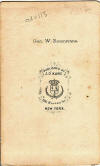 |
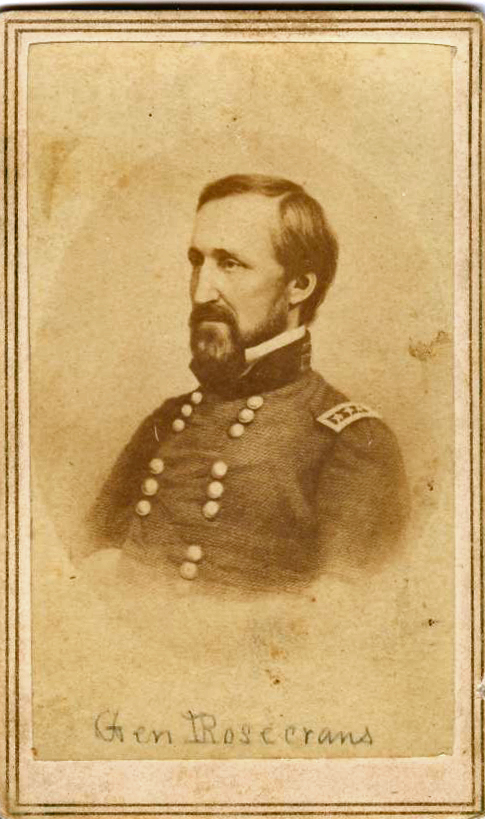 |
|
|
|
|
|
|
|
|
Return
to
Rosecrans, Part 1,
Genealogy and Youth
Return to
Rosecrans, Part 2, West Point, Marriage,
Corps of Engineers
Return to Rosecrans, Part 3, Civilian Inventor, Engineer
Return to
Rosecrans, Part 4,
Civil War
Return to Rosecrans, Part 5
Post Civil War Civilian Life
Goto
Rosecrans Part 6: Equestrian Statue of William S.
Rosecrans
on his horse Boney
Return to
Bibliography |
Site Navigation Guide:
The
source is blue,
learn more is in italics
Click on photos to
enlarge.
Use BACK to return to this page
© by Polly
Horn for
Big Walnut Area Historical Society |
(04/11/2017) |



















































